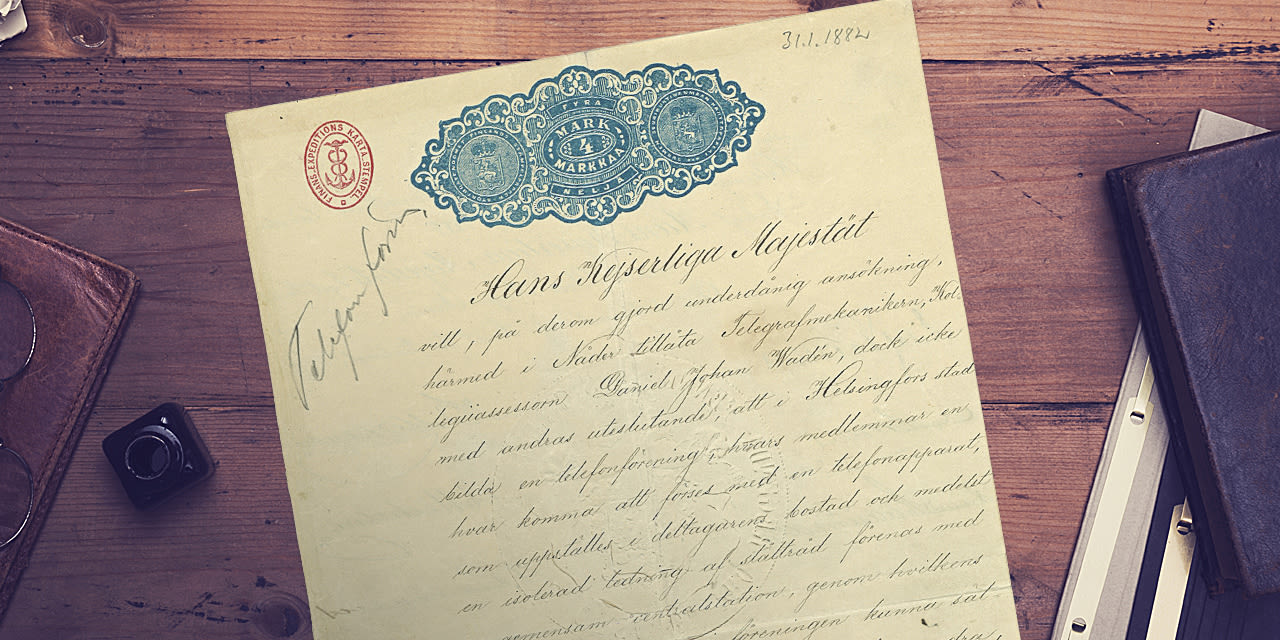

History
From being local to being national
The company, which became Helsingin Puhelin in 1985, was involved in the establishing of Oy Datatie Ab, the provider of a national data transfer service. The state's mobile phone network monopoly was broken with the help of Radiolinja, and after that, the long-distance network monopoly was also ended, at the beginning of 1994. The Ysi long-distance network founded by HPY took 50% of the long-distance call market, and call rates decreased by more than 50%. In 1997, Helsingin Puhelin Oyj was listed on the Helsinki stock exchange, and in the 1990s Radiolinja, FinnetCom, Tampereen Puhelin, Keski-Suomen Puhelin and Joensuun Puhelin merged with the company.
New corporate culture in the sector's transition; the journey of one Elisa continues
In 2000, the company was named Elisa Communications Oyj. A powerful sector transition was taking place in 2003: competition became tighter and prices dropped. Operations had to be adjusted to cater to the needs of the customers, the market and the owners. The company was named Elisa Oyj and the Board signed the merger plans, according to which most of the subsidiaries fully owned by Elisa merged with the company. The German operations (Elisa Kommunikation GMBH) were relinquished. The journey to one Elisa started.
In the 2000s, expansion through corporate acquisitions continued and Saunalahti merged with Elisa. In addition to several other companies, Elisa further strengthened its ICT selection to improve companies' productivity and flexibility by acquiring Videra (videoconferencing operator) and Appelsiini (IT outsourcing provider). In 2013 Elisa acquired PPO Yhtiöt, Kymen Puhelin and Telekarelia. In 2016 Elisa acquired Anvia’s telecom business, IT and hosting businesses as well as parts of TV business.
In 2017 Elisa strenghtened its position especially
in Estonia with ES Starman and Santa Monica Networks acquisitions. In
2018 we boosted our IT expertise in the Corporate Customers business by
acquiring Fenix Solutions, and in the Consumer Customers segment, we
acquired Kepit Systems, a company specialising in streaming and video
production services.
Accelerated by digital services that utilise the capabilities of our core business functions, Elisa’s international growth continued. International digital services contribute a growing part of our revenue. In 2019 we boosted our automation business by purchasing Polystar OSIX, a company that offers network monitoring and analytics software solutions to international telecom operators. In 2020 Elisa acquired German-based industrial software provider camLine GmbH and CalcuQuote, a U.S. based supply chain software provider for the Electronics Manufacturing Services industry. In 2021 We accelerated the growth of Elisa IndustrIQ by acquiring a majority share in TenForce, a Belgian provider of production quality (EHSQ) and operational risk management software, and a minority share in sedApta Group, an industrial software provider specialising in innovative IT solutions for digital supply chains and smart manufacturing. In 2022 Elisa Polystar business expanded with Slovak based FRINX and UK based Cardinality acquisitions. In 2023 Elisa sold majority stake in Elisa Videra's business in line with its international businesses strategy and focusing on software businesses.
The first one in the world
In its various phases, Elisa has been a forerunner in almost every aspect of telecommunications technology. For example, being the first city in the world to see this happen, the switchboards of the entire Helsinki region were automised in 1929.
In the field of digital mobile communications, Elisa has been a forerunner in both Finland and internationally. Radiolinja transmitted the world’s first GSM phone call and launched the first commercial GSM service in 1991. The first GSM data call also took place on Radiolinja’s network in 1993.
In 2007, Elisa once again made telecommunications history, being the first operator in the world to introduce a 3G/UMTS900 network for commercial use. New services, such as Elisa Viihde, were introduced in 2009. In 2011, Elisa was the first company to open a 4G network for commercial use, and opened commercial 4G/800MHz frequencies in 2014. In 2016 4G population coverage was already 98% in Finland.
We were the first operator to introduce 5G readiness to the mobile network in Finland. Already in 2017 we started construction of the 5G network in Tampere. The 5G readiness built into our network enabled us to be one of the first companies in the world to launch a commercial 5G network, already at the very beginning of the year 2019.
In 2021 Elisa was the first operator in the Nordic countries to deploy a separate commercial (standalone) 5G network. A year later, in 2022, we made a world record in 5G uplink speed.
In 2023 we introduced the first Distributed Energy Storage (DES) solution in telecom infrastructure in the world. We were the first operator in Finland to successfully ramp-down 3G network.